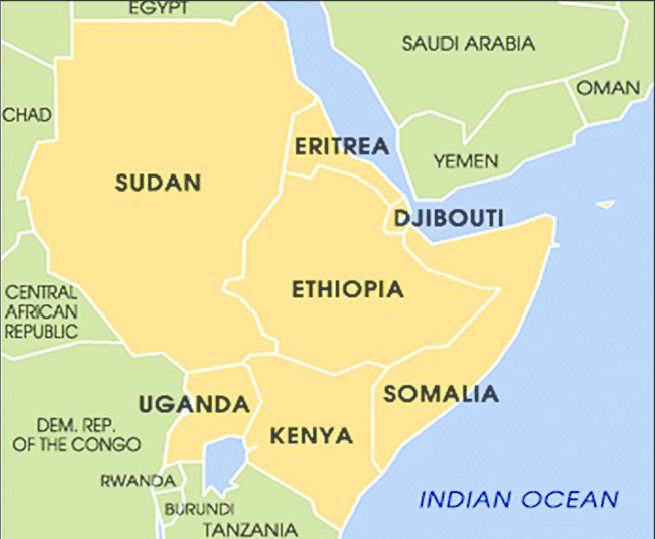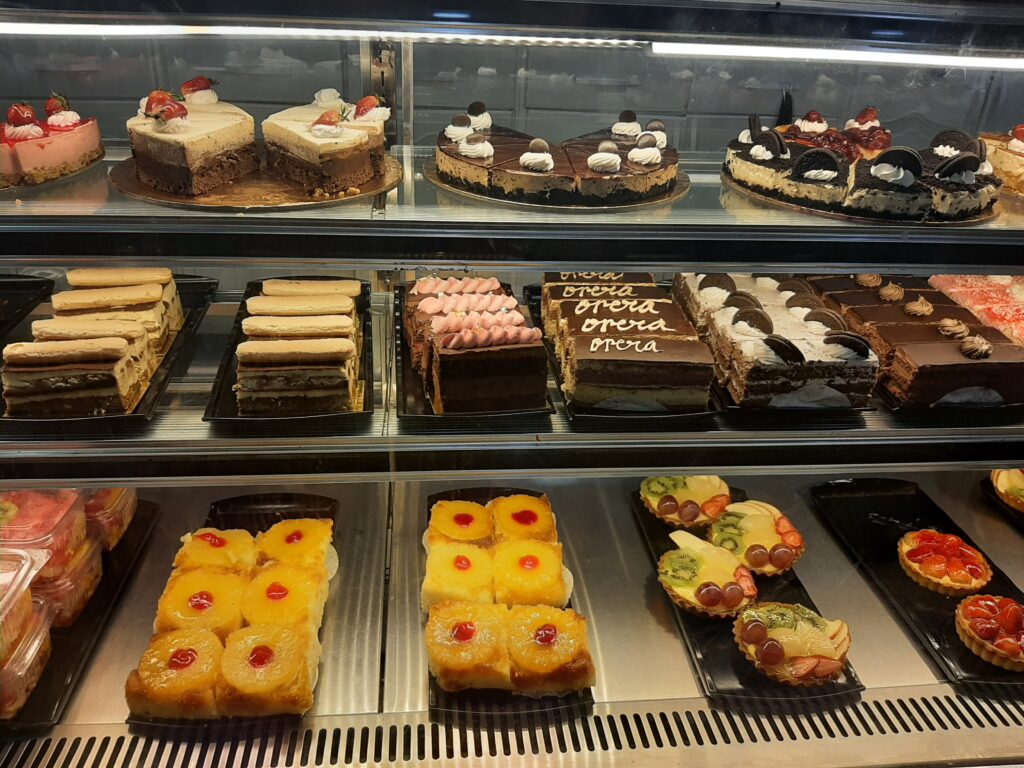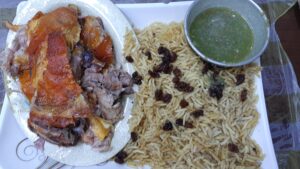Connecting over a meal:

I recently had a seven-day work trip to Djibouti with a group of African colleagues from Uganda, Kenya, Benin, Zambia, and British/Somali descent. Djibouti is in the Horn of Africa and shares borders with Somaliland, Ethiopia, and Eritrea. As the crow flies, Djibouti is only 245km from Aden (Yemen), across the sea.
The country is a melting pot of these cultures, and it is just as common to hear Somali, Arabic, or Afar spoken as the national language of French.

As a result of the mixed cultures, Djibouti City has great Yemenite and Ethiopian food, as well as a lot of international foods (such as pizza and spaghetti) on the local menus.
Merci beaucoup to the French for adding pastries to the cuisine, like these at HanCakes. Yum.
Hungry for lunch in Djibouti

After jetting into Djibouti City from Addis, our group was hungry and ready to explore. To find the best local lunch place, we followed the crowds to a Yemenite restaurant in Centre Ville (city center). Apparently, when the crisis in Yemen escalated, many Yemenis came over to Djibouti and a whole restaurant scene opened up in Djibouti City. Yemenite food is delicious, so these restaurants not only became quite popular, but also were highly recommended to us as “Djibouti food.”
Bonding over a delicious meal

Eating together in Djibouti quickly revealed the “special skills” of our group. Our Ugandan team member had been to Djibouti before and helped us navigate the neighborhood. Our British colleague spoke Somali and could order for us (there was no menu). Our Kenyan friend in the group selected the freshest fish (because it is well known that any Luo from Lake Victoria is very particular about fish!)

The communal eating was a fun experience of “pass me that sauce” and “have you tried this?” and “here, you can take the eyeball from this fish!” Everyone had great stories, like how the Kenyan matatus don’t stop – they just roll and you jump out – and the one about the man enjoying his whiskey while everyone around him panicked and prayed as the plane (almost) went down. We spent as much time laughing as we did eating, enjoying our time together until the fish were picked clean.
Our favorite restaurant in Djibouti

Our favorite lunch place was Al-Basha, with plastic laid down on the tables to catch the mess from the communal style of eating. In Yemenite restaurants, you pick out your fresh fish right from the fridge. The fish is grilled with a few mild spices and served with flatbread (sabaayad). There are various fresh sauces on the table – a tomato-based sauce (mild spice like Kenyan kachumbari), a green sauce (mild spice), and a cheese sauce (mild).

Another day we tried the goat, which was so tender and flavorful, falling off the bone with no grease, served with Basmati rice with raisins and a side of mild green pepper sauce.
No matter how much flatbread and fish we ate, we still made room for the amazing Masoob dessert. In fact, it became almost a fight to grab another spoonful before the plate moved out of reach, where it might be finished by one of our friends. One had banana and the other had dates under a layer of cream, raisins, and sesame seeds.



What is Djibouti traditional food?

After several referrals to (excellent) Yemenite restaurants, I began to ask people: “What is Djibouti traditional food?”, and after some thought, several answered “Fah-Fah, I guess?” (goat broth). Which I realized is similar to asking an American, “What is an American traditional food?” and you get a reply with a shrug, “Maybe apple pie?” Although Djibouti cuisine is borrowed from other countries, fah-fah seemed to be popular across all the cultures in their melting pot.
The fah-fah soup was served at al-Basha as a starter before our main meal. Here I am happily squeezing a bit of lemon in it.
Bon appetite!

In addition to Al-Basha (on Rue Esfahan in Centre Ville), the other top recommended Yemenite restaurants are Janateyn (on Rte de L’aeroport) and Bait Al Mandi (not far from the French Embassy.)
As my colleague said: “They bring food, and more food, and more food, until you just surrender.” Go as a group if you can, and plan for a food-induced nap afterwards.
Curious to know more about what to eat in Djibouti? Check out “A foodie in Djibouti” Part 2 (street food cuisine) and Part 3 (food culture).
Eat home-cooked meals with Jiranileo around Africa! Check out our Invitations page for more information about where we are and what Jiranileo is all about.





